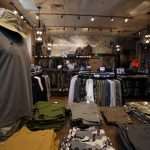Comfort and joy? Neither retailers nor shoppers expect much of either this holiday shopping season, predicts global retail and consumer products consulting firm Kurt Salmon Associates (KSA), as merchants face another year of potentially chilly spending and consumers hone their shopping strategies to survive the holiday mayhem.
KSA surveyed consumers nationwide and found 75% of them say they dont even enjoy the biggest shopping event of the year.
Cold Pocketbooks
The malls might be warm and cozy, but consumers say their pocketbooks are still cold. Nearly 30% of survey respondents say theyll spend less in 2004 vs. 2003, and half say theyll spend about the same as last year. Only a tepid 21% plan to spend more than in 2003.
“Holiday 2004 will see modest spending growth of 3% to 3.5% by increasingly demanding consumers,” says KSA’s Madison Riley. “Retailers will have to execute on multiple fronts to have a happy season.”
What consumers really want is bargains. More than two-thirds of survey respondents buy holiday items on sale, and the primary factor influencing shopping destination is price, which determines where 43% of respondents will shop.
Naughty or nice, shoppers should have no trouble finding bargains. “Lukewarm results for many retailers this summer and fall have caused them to jump on the promotion bandwagon very early this year as a way to make up for lost sales,” Riley says. “Consumers are poised to take full advantage of the promotional drive.”
Christmas Campaigns
Seasoned shoppers will arm themselves with a bevy of buying tactics aimed at saving money and time: 57% will shop at different stores; 54% will use a budget; 49% will look for coupons, sales, and discounts; 48% will shop with a list; and 44% will complete their shopping as quickly as possible.
Time-pressed consumers are dealing with more diverse shopping lists and recognize that successful “one-stop-shopping” is very unlikely. Selection (26%) and convenience (22%) follow price as the primary factors determining where consumers will shop.
Extended store hours (e.g., 7 a.m. to 10 a.m. or 7 p.m. to midnight) are a big hit with consumers, especially the 18-to-24 age group (79%) and shoppers with children at home (71%). “Retailers need to create and communicate compelling reasons for consumers to include them in their shopping plans,” Riley says. “During the busy holiday season, that includes being open at convenient times.”
Online Retailing Heats Up
Another year of major growth for the Internet — which will serve as both shopping destination and research tool — is expected. Sixteen percent of respondents say they will shop non-store channels: some simply want to avoid the crowds; others prefer the convenience and ease of online shopping.
“The growing appeal of the Internet will affect store-based retailers in significant ways,” says KSA’s Jim Neal. “An increasing number of consumers will browse for gift ideas, compare product features, search for the best offer online, and then do some final comparisons and purchasing in the store,” he says. “Their minds will be made up as they walk across the store threshold, and their expectations in terms of merchandise availability will be high.
“Brick-and-mortar retailers who are effectively integrating their Internet-based businesses into their total customer value proposition are more attractive destinations,” Neal says. “Most multi-channel retailers are now able to offer the convenience of buying on the Internet and either picking up or returning at the store.”
Winter Winners
Mass merchants are, once again, the darlings of holiday shopping, but income, predictably, does matter. Thirty-nine percent of all respondents will spend at mass merchants this year. Of those, 45% have incomes of $25,000 to $50,000 and 25% have incomes greater than $100,000.
KSA predicts the retail winners for Holiday 2004 will be single brand vertical retailers such as Anthropologie, Chico’s, Gap, Hollister, Pacific Sunwear, and Urban Outfitters. “These retailers know their target consumer group, develop innovative and compelling assortments for that group, and are able to get desired products on the floor quickly,” says KSA’s Wendy Farina. “Understanding their target consumers needs enables these retailers to more effectively tailor their advertising, marketing, and promotional messages, thus triggering more frequent shopping visits,” she says.
Dont count department stores out this season. “Department stores are developing new ways to compete,” Riley says. “Smaller footprints, unique formats, and a commitment to developing proprietary brands and products may enable department stores to reclaim some shoppers,” he says, “especially in the $100,000 plus income category.”
Hot Holiday Gifts
While expectations for last-minute shopping always attract a lot of attention — and retailers hopes — KSA’s research indicates only 21% of consumers acknowledge waiting until the last minute to complete their holiday shopping.
Despite all the planning, however, what goes in the shopping cart is not always a foregone conclusion. More than one-third (36%) of surveyed consumers expect to find ideas and inspiration in the stores they visit, and only 19% purchase only what they planned.
“The happiest retailers will provide some innovative, compelling surprises and position some strong impulse purchase items that meet the needs of consumers seeking inspiration,” Farina says.
What’s Santa expected to stock up on? Look for electronics; TiVo; health and wellness items such as clean air systems and aromatherapy; jewelry favorites, including pearls (black, white, yellow); entertainment items (DVD and CD sets); specialty foods; wine; and increasingly ubiquitous gift cards. “Customization also continues this season,” Farina says. “Look for many teens to exchange home-mixed CDs tailored to their friends musical tastes.”
“Brands and retailers recognize they have to stay in stock with hot items or watch the sale go out the door,” Riley says. When shopping for specific gift item, 60% of KSA’s survey respondents will go elsewhere if the store is out of stock; 23% will purchase another item; only 8% will check back at the same store later.
The KSA survey of U.S. consumers was conducted online among 481 males and 519 females during the last week of October 2004.















